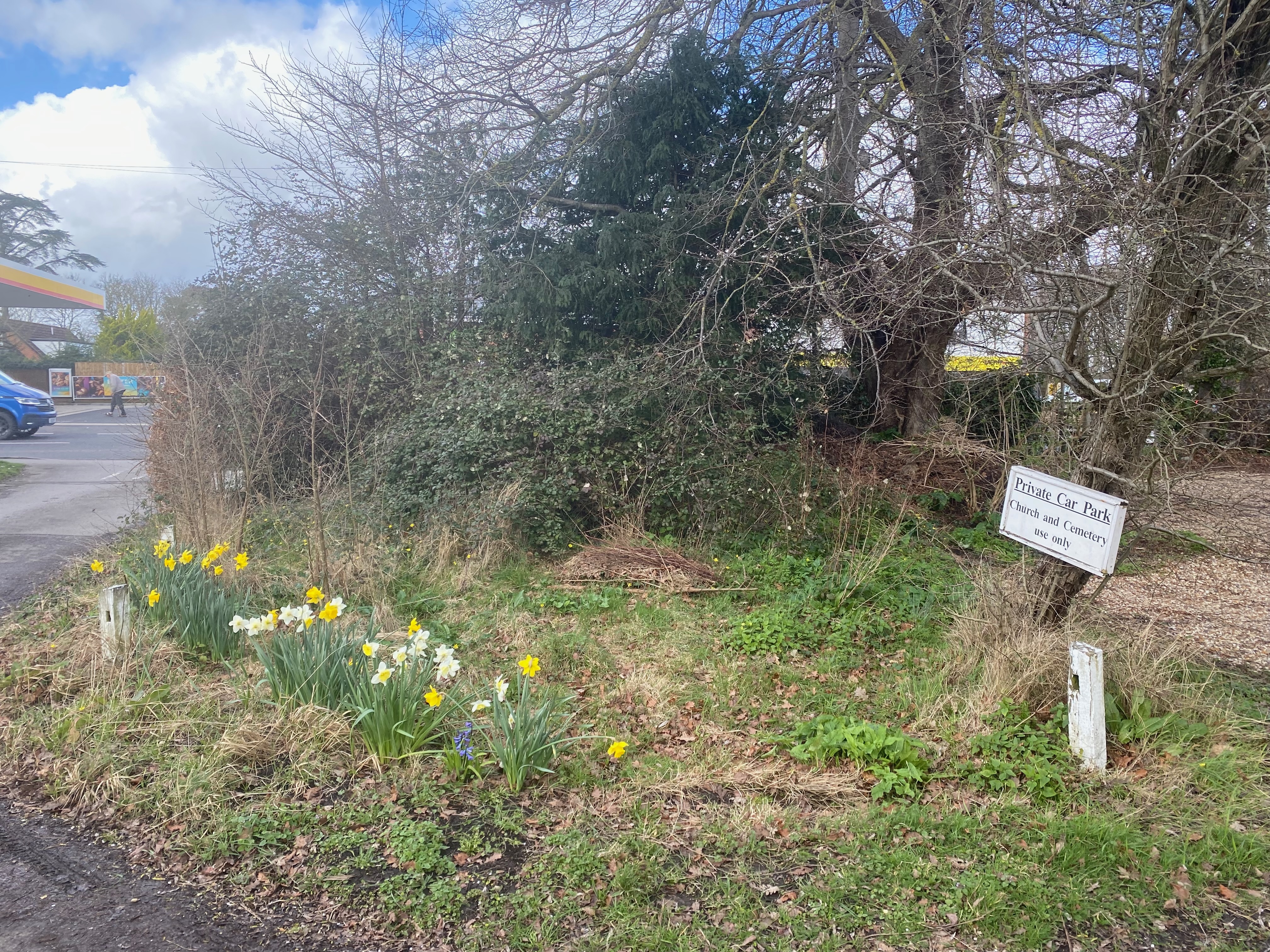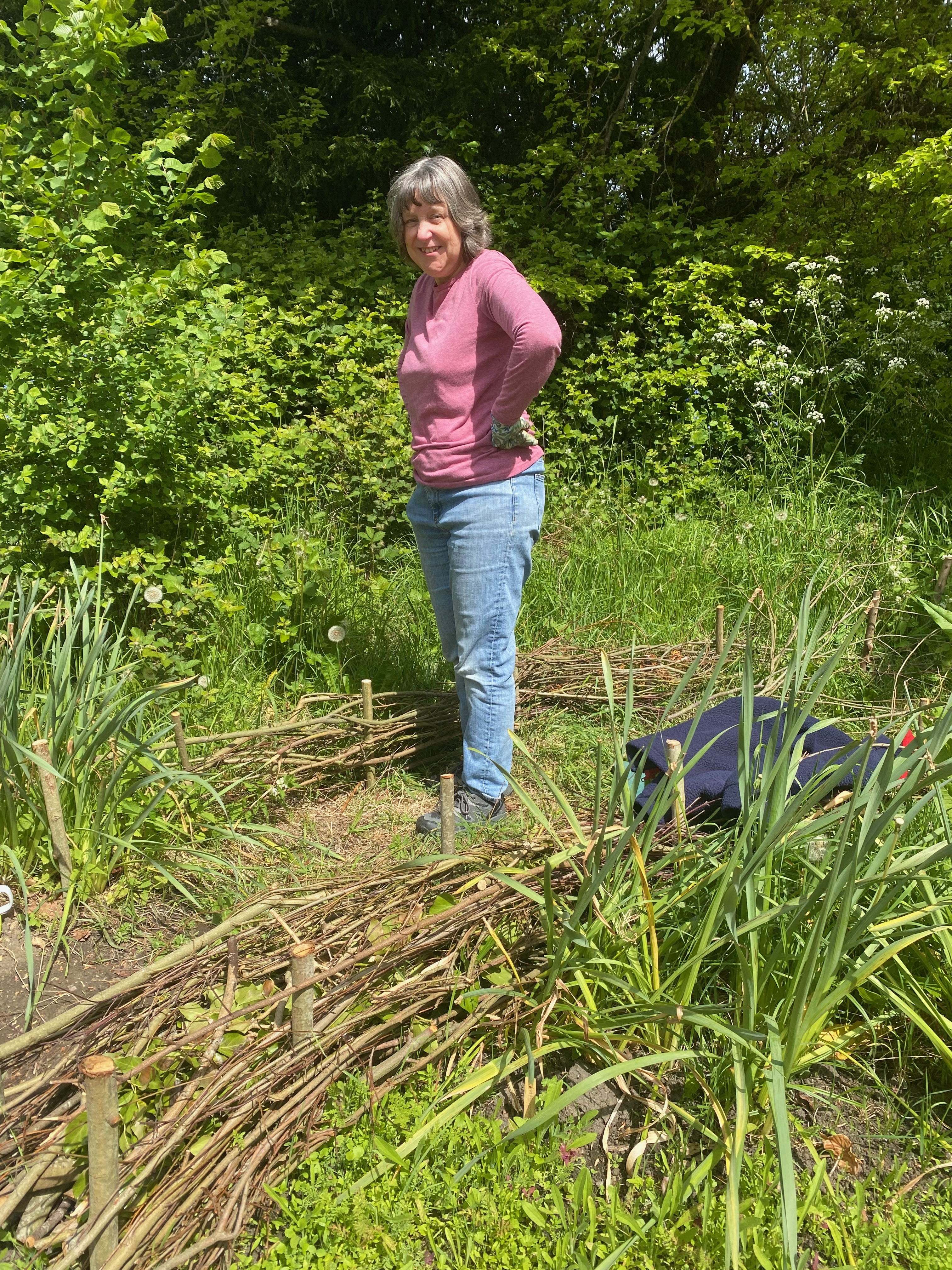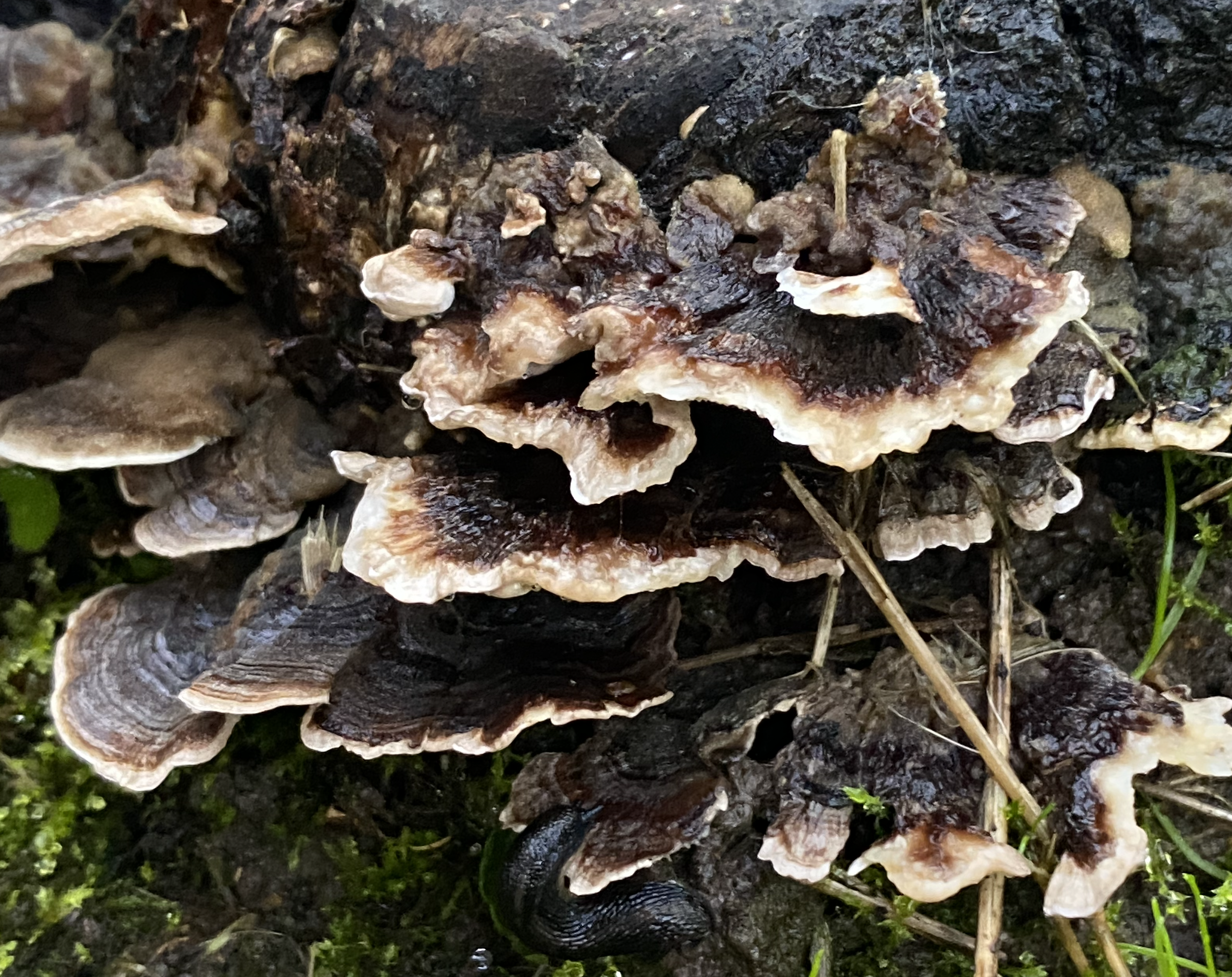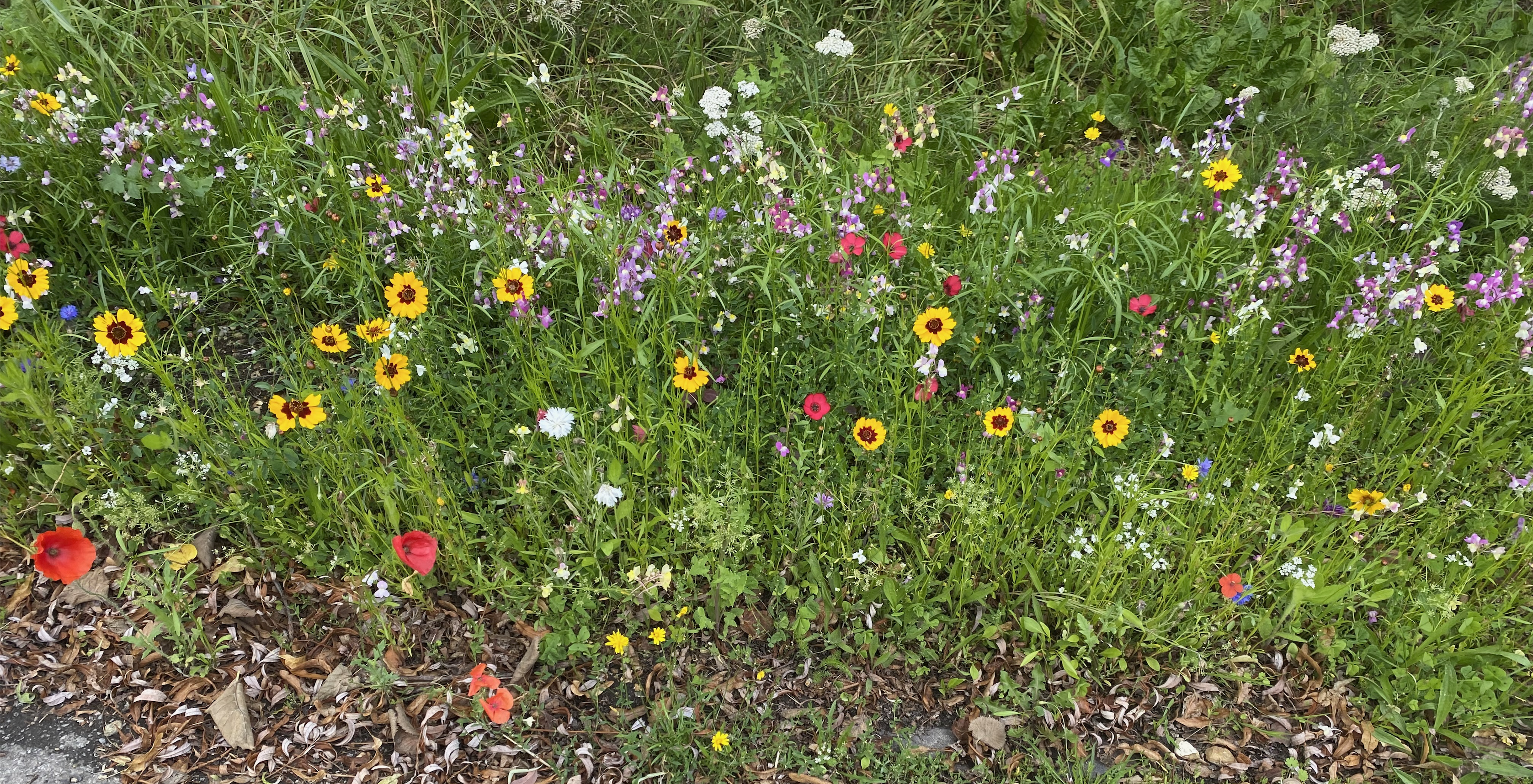Wild corner is an area of the garden by the exit to the car park. It is a nice sunny spot, and one that the local school children have surveyed as part of their #wilder initiatives. They found it to be the most diverse area in the church grounds.


This area is not far from the St John's Playgroup, and we wanted to make it a nice area for the children to visit, so we put a small grass path through the area. The path is a edged by a dead hedge, and is made from dead bits of wood. The idea behind a dead hedge is that the wood will decay, and become a habitat for all sorts of small insects such as beetles. Dead hedges need to be topped up every so often, but is a good way to use some of the trimmings from where we have pruned trees or shrubs. If you are interested in finding out more about dead hedges see this link. Between the path and the drive, we are growing a colourful display of native wild flowers.
 We have also added some bits of wood to be a log pyramid (also known as a stumpery), these are thick logs, which are partially buried (to avoid drying out). As an alternative to building a log pyramid, old dead trees can be left as a stump. Overtime fungi and lichen will grown on the wood, and help breaks down the wood.
We have also added some bits of wood to be a log pyramid (also known as a stumpery), these are thick logs, which are partially buried (to avoid drying out). As an alternative to building a log pyramid, old dead trees can be left as a stump. Overtime fungi and lichen will grown on the wood, and help breaks down the wood.
Looking under the logs or even burying inside the logs, we might find a variery of mini beasts such as centipedes or beetles - mini beasts are really invertebrates (creatures without a backbone), there are around 25000 types of invertebrates in the UK, of which around 20000 are insects. Some invertebrates help to break down dead matter, for example breaking down the leaves that are on the compost heap and turn it into compost which can in turn can add nutrients back into the soil and help plants to grow. In turn invertibrates are food for other bigger invertibrates, or vertebrates eg slow worms or mice.
Over 2023 we have cut back the brambles, removed most of the dead trees using some of them to make dead hedges. We have extended the planting of wild flowers, using native wild flower seeds, which were donated by Hook in Bloom and a couple of Brownies. As the summer went on, we were able to harvest our own seeds from the plants growing in this area, and hopefully future summers will see a greater number of colourful blooms. By increasing the native wild flowers in the church grounds, we are hoping to encourage pollinators such as butterflies and bees to visit. In the summer of 2023 we took part in the Great Butterfly hunt, and counted 6 species of butterflies visit the grounds. If you are interested in helping with one of our BioBlitz (basically where we do a survey where we record plants, fungi, insects etc over a short period of time) do talk to one of the team.
Our wild flower area over the summer: 
This area also has a refugia for slow-worms. As slow-worms are protected, please, can you avoid disturbing their habitat and if you see one do not touch it. Thank you!